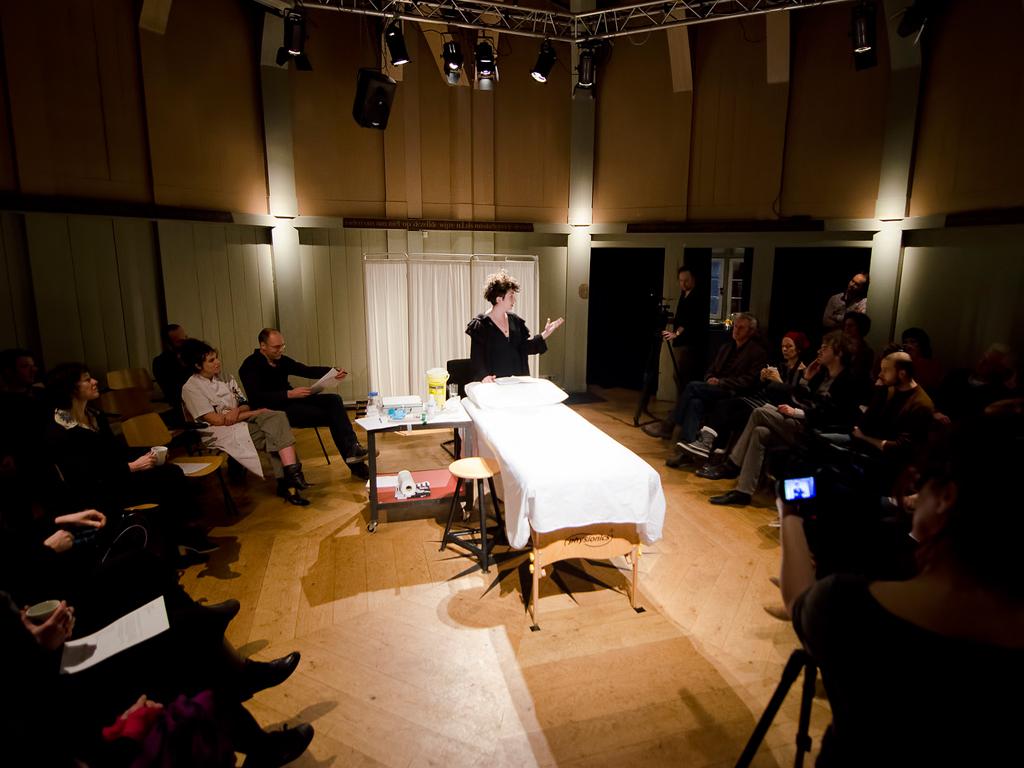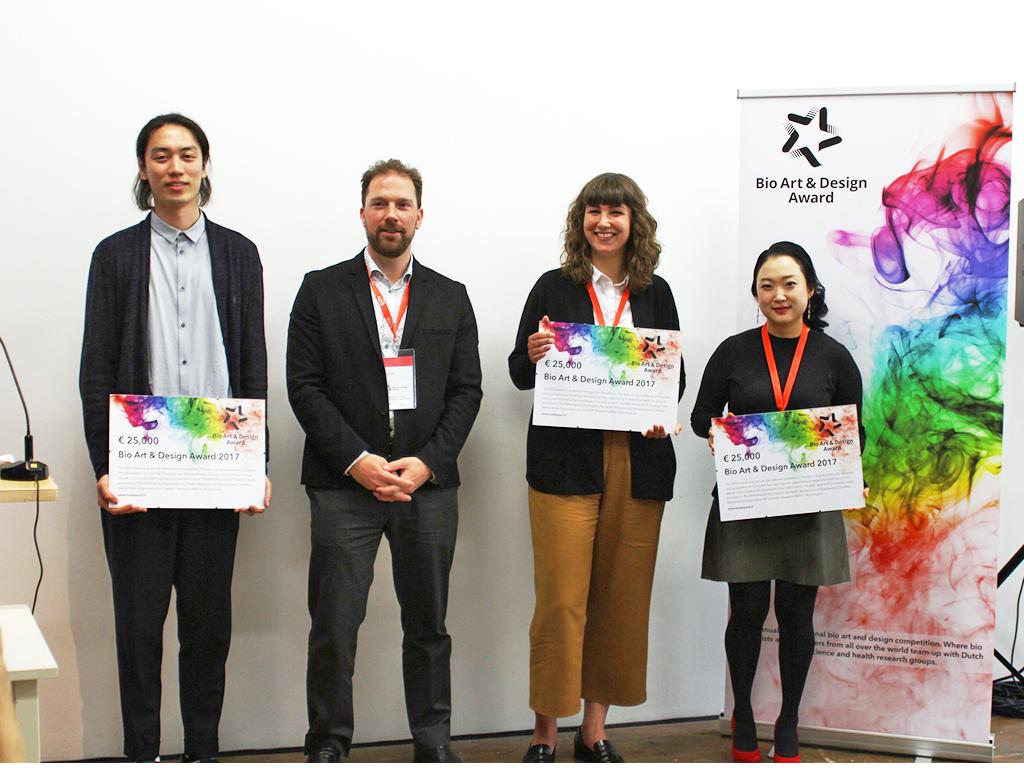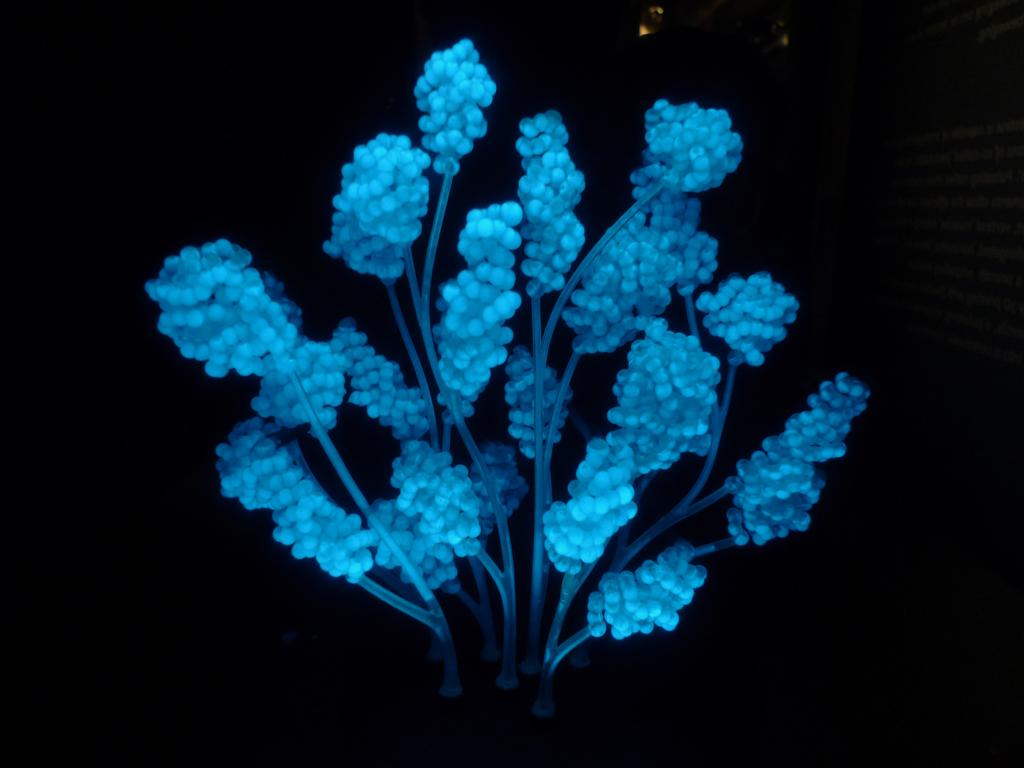Friday January 25th, the first phase of the project Ergo Sum took place at the historical Anatomical Theatre of the Waag building in Amsterdam. With this project, Charlotte Jarvis and the research group of Prof. Dr. Christine Mummery and the Proteomics Centre recently won our yearly contest: The Designers & Artists 4 Genomics Award. They are currently working towards an exhibition in Naturalis.
In the presence of the public artist Charlotte Jarvis donated blood, urine and skin tissue, to be used by Mummery’s group of stem cell research at the Hubrecht Institute. The living cells found in those substances will be medical metamorphosed into induced pluripotent stem cells (IPS) and after that into totally different sorts of bodily tissue of the artist: brain cells, blood vessel cells and hart cells, thereby creating a half-life portrait or semi-living portrait of the artist in a life support system yet to be designed.
History of science visualisation
The performance took place in our Theatrum Anatomicum, used in the 17th century for public dissection, thereby forming the roots of medical research as we know it today. With Nicolaas Tulp, Frederik Ruysch and Rembrandt, Ergo Sum forms a continuum in terms of the science visualisation created and the donation that took place. The difference is that in this contemporary project an artist herself is donating body substances to create a conceptual artwork.
Public doctor visit
After an engaging and very insightful presentation about the science, art and the personal motivation of the artist to embark on this experiment, Dr. Elodie Mendels of Leiden Academic Hospital took Charlotte’s blood and skin and in between the artist collected urine behind a doctor screen. The performance happened in an atmosphere as if Charlotte had taken us to her personal physician to make us witness of some, not so harmful, rare things to be taken from her body. There was giggling by the artist and us, there was some unneeded vicarious pain when she had to undergo the skin biopsy (with a local anesthetic) and there was the interesting moment she signed the consent forms in which she authorised science to use her body materials – or her, doppelganger?
Scientific promise of stem cells
After the performance there was a round table with Prof. Dr. Christine Mummery developmental biologist at the Hubrecht Institute, Prof. Dr. Albert Heck director of the Netherlands Proteomics Centre, biologist and essayist Arjen Mulder and Charlotte. Christine Mummery explained about the controversies around stem cell research and the uses of embryonic stem cells and her colleague Albert Heck explained the relationship between protein research and stem cells and they both elaborated on the scientific promise of how the new findings of making IPS’s from specialised tissue opens up less controversial avenues for stem cell research and in vitro drug testing.
Dangerous
Simultaneously disturbing and poetic I found the fact that the stem cells made from Charlottes own substances are a danger to her even when only touching. As her body does not experience them as alien, they can bind and start to grow as a cancer, not being a cancer themselves but because of their pluripotent power. The discussions about the aesthetic of the life support system (the incubator(s) that will hold Charlottes doppelganger tissues) that Charlotte is in the process of designing at the moment brought about an interesting discussion about anthropomophisims in techno arts. The exact sculptural nature of the cells stemming from Charlotte, the form by which those are supported and presented are still in the process of decision at the moment and that makes is intriguing to follow what happens and what choices will be made.
I am interested in how those choices can in turn inform the science involved. What kind of new artistic, scientific and societal insights will the in vitro cell sculpture that Charlotte and the NPC will produce offer us?


